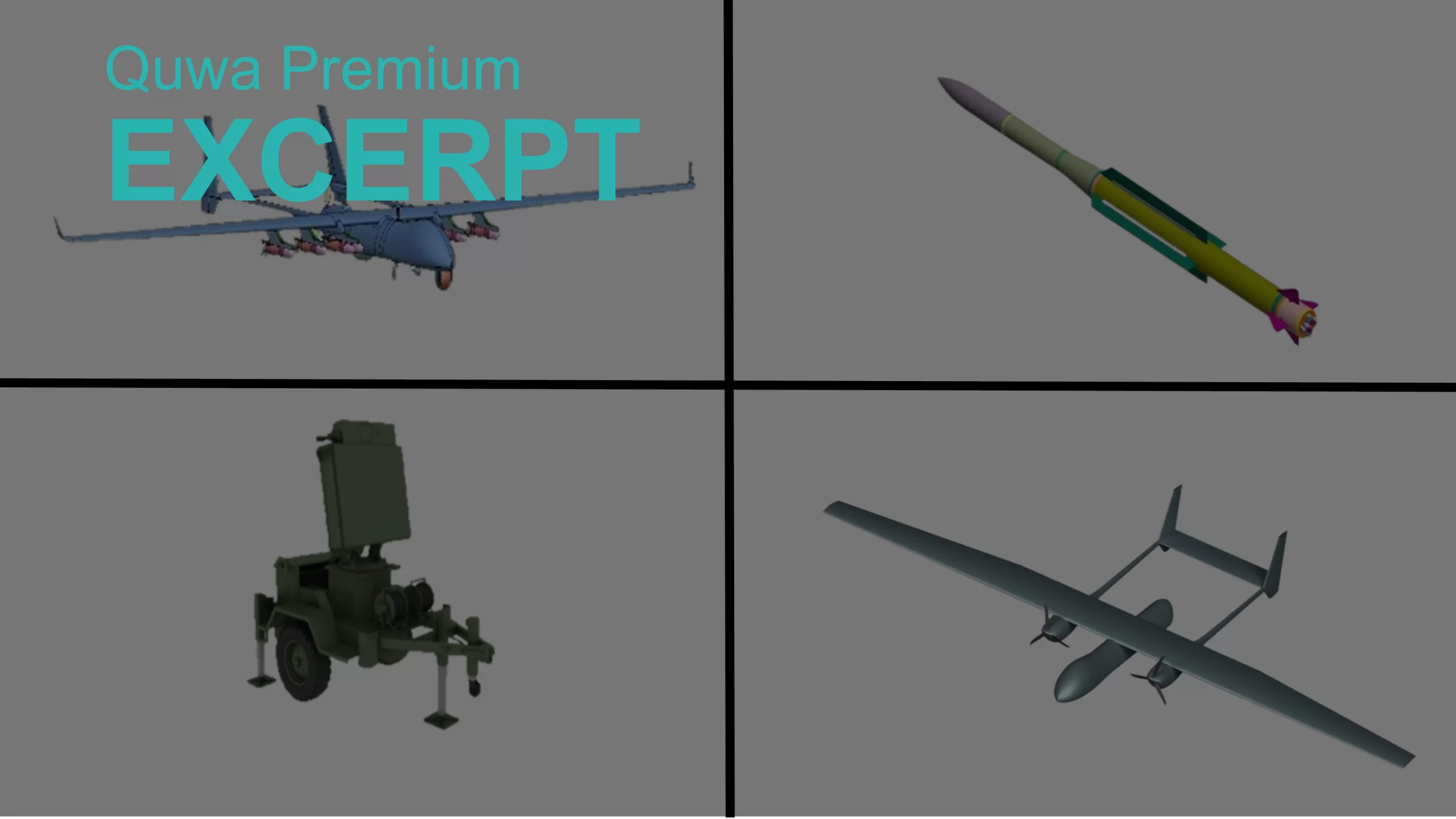2911Views

Pakistan’s Defence Industry Lays Out Ambitious Future Roadmap
Global Industrial and Defence Solutions (GIDS), the commercial representative of multiple Pakistani state-owned defence suppliers, released its roadmap for future products.
The roadmap can be accessed from GIDS’ official website, and it contains a wide variety of potential arms ranging from, among others, new high-altitude long-endurance (HALE) unmanned combat aerial vehicles (UCAV), active phased-array radars, surface-to-air missile (SAM) systems, and torpedoes.
Overall, GIDS’ future roadmap ranges from improved variants of existing, mainstay solutions – such as the Fatah-series of surface-to-surface missiles (SSM) and Burq-series air-to-ground missiles (AGM) – to newly revealed systems, like the “Group 5 UCAV” or “LOMADS” SAM system.
It should be noted that GIDS itself does not develop or manufacture any of the systems it is promoting and selling. Rather, GIDS serves as the commercial wing of a conglomerate of Pakistani state-owned enterprises that specialize in defence, such as NESCOM, for example. Basically, it is these state-owned enterprises that carry out the development and production work of GIDS’ products…
End of excerpt. Subscribe to Quwa Premium to read the rest of this section.
New HALE UCAVs
According to GIDS, there are two HALE UCAVs are under development: the 3,000-kg “Group 5 UCAV” and the 1,650-kg Shahpar III (also designated as “Group 4”).
The Group 5 UCAV seems to leverage twin turboprop or piston engines. The Group 5’s designers (possibly, if not likely, NESCOM) is aiming to achieve an endurance of over 35 hours and external payload in excess of 450 kg. Though it is called a UCAV, it seems that NESCOM is optimizing the Group 5 for the intelligence, surveillance, and reconnaissance (ISR) role, especially imaging-related missions…
End of excerpt. Subscribe to Quwa Premium to read the rest of this section.
New Air Defence Systems
GIDS also revealed multiple potential systems that may speak to the future of Pakistan’s ground-based air defence (GBAD) environment through new SAMs and radars.
First, there is a ‘LOMADS’ SAM with a range of up to 100 km and maximum engagement altitude of 20 km. According to GIDS, each of these LOMADS units would comprise of a multi-function radar and six multi-cell launchers carrying four missiles each. GIDS did not reveal the guidance and seeker details of the SAM, but it likely leverages active radar homing (ARH) like the majority of its current-day contemporaries.
GIDS also revealed an ‘E-SHORADS’ system, which it has also designated as the ‘FAAZ-SL’. The FAAZ-SL will offer a maximum range of 20-25 km and a maximum engagement altitude of 6-8 km. GIDS stated that the SAM will be truck-mounted (seemingly similar in design to the NASAMS)…
End of excerpt. Subscribe to Quwa Premium to read the rest of this section.
Improved Variants
Finally, GIDS has also shown that Pakistan is committed to continue developing upon the systems it already has, such as the Fatah, Azb, Burq, Zumr, and Ribat.
The Fatah-II is an evolved variant of the Fatah-I, an indigenously developed multiple launch rocket system (MLRS). Whereas the Fatah-I has a range of 140 km, the Fatah-II will improve upon it with a range of equal or more than 250 km, while also continuing to leverage the same GNSS-aided INS guidance suite…
End of excerpt. Subscribe to Quwa Premium to read the rest of this section.
Analysis
Overall, GIDS has revealed a relatively ambitious product roadmap. In some respects, it may have revealed a number of critical in-house programs under development across Pakistan’s state-owned enterprises.
It is unclear how far Pakistan has developed each of these systems. However, given that GIDS has revealed them to the public (and, potentially, to potential overseas buyers) could suggest that the institutes behind each of these are relatively confident about completing these projects…
End of excerpt. Subscribe to Quwa Premium to read the rest of this section.
End of Excerpt (541 / 1,001 words)
You can read the complete article by logging in (click here) or subscribing to Quwa Premium (click here).
For more Pakistani defence news and analysis, see:


